#catalhoyuk
Text
Individual houses were typically in use for between fifty and 100 years, after which they were carefully dismantled and filled in to make foundations for superseding houses. Clay wall went up on clay wall, in the same location, for century after century, over periods reaching up to a full millennium. Still more astounding, smaller features such as mud-built hearths, ovens, storage bins and platforms often follow the same repetitive patterns of construction, over similarly long periods. Even particular images and ritual installations come back, again and again, in different renderings but the same locations, often widely separated in time....
as individual houses built up histories, they also appear to have acquired a degree of cumulative prestige. This is reflected in a certain density of hunting trophies, burial platforms and obsidian - a dark volcanic glass, obtained from sources in the highlands of Cappadocia, some 125 miles north. The authority of long-lived houses seems consistent with the idea that elders, and perhaps elder women in particular, held positions of influence. But the more prestigious households are distributed among the less, and do not appear to coalesce into elite neighborhoods.
a description of Çatalhöyük, a neolithic city from 7,400 bc. from the dawn of everything, by davids: graeber and wengrow.
this city remained settled for 1,500 years - "roughly the same period of time that separates us from amalafrida, queen of the vandals in .. ad 523"
#eezordalf's wisdom#the dawn of everything#david graeber#david wengrow#anthropology#paleoanthropology#books#prehistory#neolithic#Çatalhöyük#catalhoyuk#history#unfocus your eyes and let the vast maw of time take you#wizardblr#wizardposting
597 notes
·
View notes
Photo
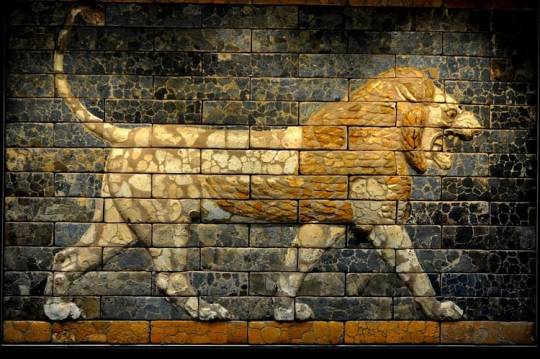
Mesopotamian Art and Architecture
Ancient Mesopotamian art and architectural works are among the oldest in the world, dating back over 7,000 years. The works first appear in northern Mesopotamia prior to the Ubaid Period (c. 5000-4100 BCE) and then developed in the south during the Uruk Period (4100-2900 BCE) in Sumer which established the first historical civilization.
Learn more about Mesopotamian Art and Architecture
171 notes
·
View notes
Text
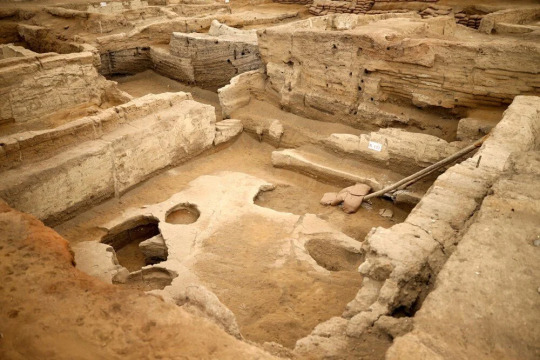
Carbs since forever ago. Amazing to find something like this. So ephemeral.
52 notes
·
View notes
Text
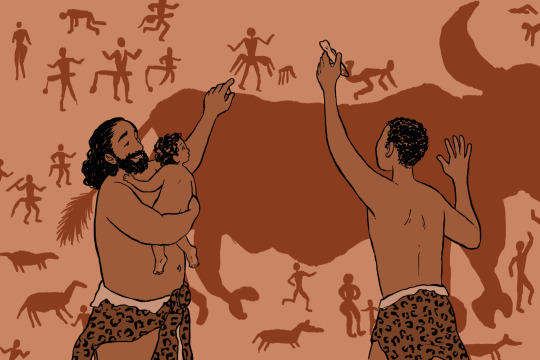
Wanted to share this piece from an abandoned project illustrating intimate daily life scenes in Neolithic Çatalhöyük
149 notes
·
View notes
Photo
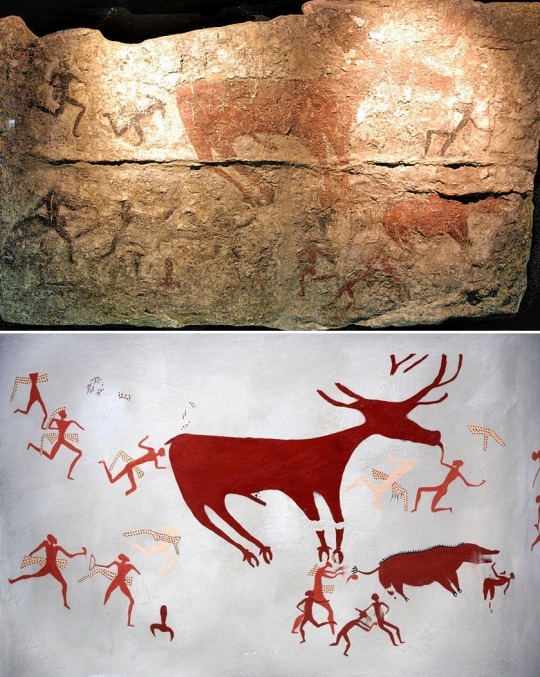
Detail of a wall painting from Level III, Catal Hoyuk (modern-day Konya, Turkey): Deer Hunt, c. 5750 BC.
Çatalhöyük is a large Neolithic “town” with a history of 9.400 years and was inhabited by approximately 8.000 people. In this big town without streets, people walked around on the roofs and entered their homes through the openings in the roofs. These people created wonderful works of art, as can be seen from the murals, reliefs, and sculptures inside their homes that have survived for thousands of years. The works of art found in Çatalhöyük shed light on the early periods when the people from Asia Minor began to live in the city.
Our designs inspired by this 7.700-year-old deer-hunting scene are available on Amazon and Redbubble. Our website: https://archaeostore.com/

The walls of the houses in Çatalhöyük were plastered, and after the plaster was painted white, wall paintings were made in red, black, and yellow tones. These paintings are a continuation of the tradition started by the Paleolithic men who painted on the cave walls. Among the depictions painted on the walls, geometric motifs, handprints, human and animal figures (vulture, leopard, wild deer), hunting and dance scenes that may have been made for good hunting, and wall paintings reflecting the natural environment come to the forefront.
141 notes
·
View notes
Text

No idol worship?- Sorry Jesus but this shit was fuckin awesome
15 notes
·
View notes
Note
Do you want to tell us about iron age Çatalhöyük? I can always look it up myself if you don't, so no pressure. But if you wanted to info dump about it, I'd be fascinated at the very least.
Sure, I can do that. I might have forgotten some facts, but I'll provide some links too.
EDIT: Tumblr ate my first post, so this is my second try. Didn’t turn out as good since I wrote the first one while being in a “flow”. Sorry about that.

So, Çatalhöyük was a neolithic (stone age) settlement. Some call it a city, others a proto-city, it housed around 8000 people at its height. It's not the oldest or largest neolithic settlement, but still an important one since it shows humans going from hunter-gatherer nomads to settled farmers. People lived there for over 2000 years! From around 7400 BCE to about 5200 BCE, so a lot happened there. So why is it important? Well, I find all neolithic archaeology important, but Çatalhöyük has a rather unique architecture and it also shows the importance of art for human society.

The houses were roughly square and built back-to-back and on top of each other, meaning that there were no streets or footpaths. Instead people travelled through the rooftops and entered their homes through holes in the roofs, climbing down wooden ladders. That must have been fun for the kids, climbing around like that, though I guess they got as used to it as we get used to walking on the streets. Can't have been easy for elderly or the physically disabled though (but few lived very long though).
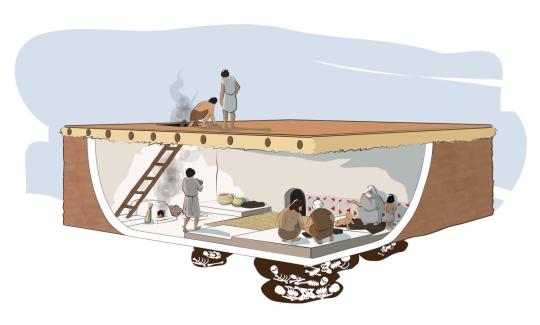
Although the homes varied a bit, the inside was generally one roof with a platform where people lived and slept with an oven under the ladder (it seemed like the entrance hole also served as an escape route for the smoke). There also seemed to have been communal ovens, which might have been used for communal gatherings. And here comes a part that some might find bizarre, but the dead were placed underneath the floor of the homes, under the platforms where they lived. Although this practice has been seen in other places too.

To the art. Most homes had wall paintings and/or relief. The most common motifs were animals, peoples and geometric shapes. Last time I read about this, there was some connection between the geometric art and the death of youth, but that theory might have changed now. The thing is, the art was everywhere, not just the paintings, but also figurines. One of the most famous figurines is that of what is believed to be a fertility goddess. Due to the amount of art found at Çatalhöyük, it’s clear that it had a significant importance to their society and it also seemed to have grown the longer the people were settled there. One theory is that when they spent less time hunting/gathering and moving around, they got more time left for art, which makes sense, even if there, of course, got new things that had to be done too (like house maintenance and husbandry).

This is just scratching on the surface of Çatalhöyük. It’s a fascinating place and if you find this post interesting, I recommend that you check out the links or maybe do some further research yourself.
LINKS
Çatalhöyük Research Project
Khan Academy Article
Archaeology and CGI: The Shrine of the Hunters at Çatalhöyük (YT vid)
#archaeology#catalhoyuk#çatalhöyük#neolithic settlements#i'm not a professional#just someone who likes archaeology#own stuff
2 notes
·
View notes
Text
Thinking of the female couple found buried together at Catal Huyuk with "several cow horns" and a fertility statue
#just gals being pals#such good friends#queer history#(maybe)#(probably)#catal huyuk#catalhoyuk#if anyone knows more about this site and/or this couple I'd be very interested to know#there's not a ton of public information about the two
0 notes
Photo

Ҫatalhöyük
Ҫatalhöyük est l'un des plus grands sites néolithiques jamais découverts. Construit il y a plus de 9 000 ans dans la plaine moderne de Konya, dans le centre de la Turquie, il est connu en archéologie comme une proto-ville, un lien entre les habitations troglodytes des chasseurs-cueilleurs préhistoriques et les premières constructions urbaines. C'est là que, pour la première fois dans l'histoire, des communautés ont commencé à cultiver des plantes et à élever des animaux de manière planifiée et systématique.
Lire la suite...
1 note
·
View note
Text

Artist rendering of Çatalhöyük (ca. 7400–6000 BCE) with its close-packed houses and rooftop entrances, located in south-central Anatolia about 50 kilometers from the modern city of Konya, Turkey. Individuals were buried within houses, notably under platforms and floors, placing the living both physically and symbolically with the dead.
Image credit Dan Lewandowski. Source below has more info on burial practices:
#catalhoyuk#anatolia#turkey#7000 bce#bone#earth structure#earthen#6000 bce#dan lewandowski#header image#burial#death#op
0 notes
Text
NUOVE SCOPERTE A ÇATALHÖYÜK, TURICHIA
NUOVE SCOPERTE A ÇATALHÖYÜK, TURICHIA
Team di archeologi polacchi, in missione a Çatalhöyük, nell’Anatolia centrale, ha identificato un grande edificio in mattoni di fango ritenuto un luogo di incontro tra gli abitanti di uno degli insediamenti più antichi del mondo. L’edificio fu identificato verso la fine dell’esistenza dell’insediamento, oltre 8.000 anni fa.
Çatalhöyük, un sito archeologico che fu abitato ininterrottamente per…

View On WordPress
0 notes
Text
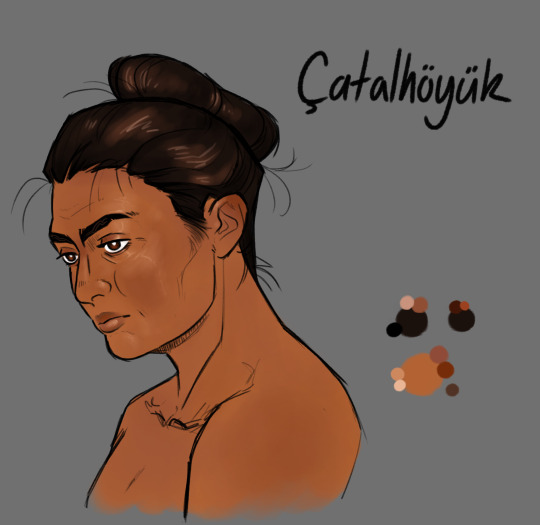
this has been in my head for a few days and i am scared to post but bringing y'all this like a cat with a dead bird
#alpha romeo tango#hetalia#aph ancients#hws ancients#aph catalhoyuk#hws catalhoyuk#don't ask why i wanted to make this it just seemed like a really interesting concept
147 notes
·
View notes
Text
someone give me an archaeology site to research im bored
7 notes
·
View notes
Text
I can't find the original post I'm responding to with this one (sorry original OP) but way back there was a very excellent post about Harrow which pointed out that its kind of telling that John claims to be aiming to resurrect the dead Earth... but the Houses are nothing like any Earth culture really. All that's left is stray memes...
But I was thinking about it and like... one guy. No matter how hard you tried or how good your intentions, how much of real history and culture could any single person really preserve. Even with good access to things like records (which I get the sense would not have been an option based on what we've seen from Nona), really, how much could you do?
And its been 10,000 years. 10,000 years is and incomprehensible timespan. Absolutely boggling. That takes us to... if my math is correct... 8000 BCE. I'm not an archaeologist, but based on Wikipedia, that gets us to... about the time grain agriculture was invented, but before the invention of cities. It is, still according to Wikipedia thousands of years before the earliest evidence of human life in Aotearoa.
How many of those people's memes do we have? I asked @pinkcupboardwitch who is both an excellent classicist and kind about my insane questions, and she confirms that we don't really know what stories they told, memes they shared or gods they worshipped. We have archaeology, but they haven't persisted in an unbroken way.
I'm not sure exactly where I'm ending this, except that this sort of thing is why I wouldn't be able to cope with being an archaeologist.
#she also told me about burial customs in catalhoyuk which made me need to have a lie down but that's a different post#the locked tomb
63 notes
·
View notes
Link
8 notes
·
View notes
